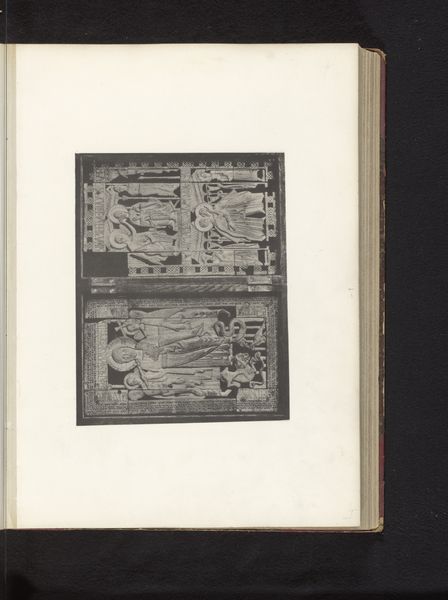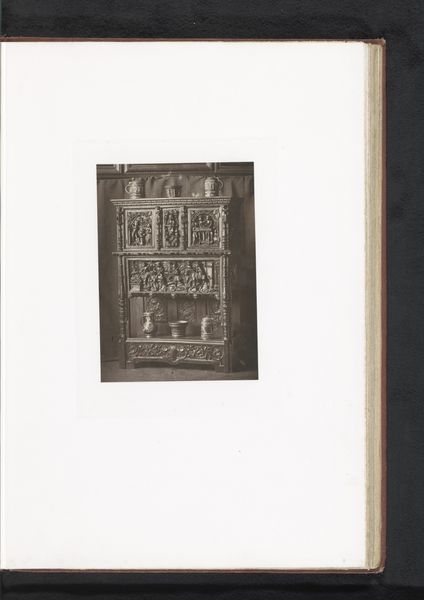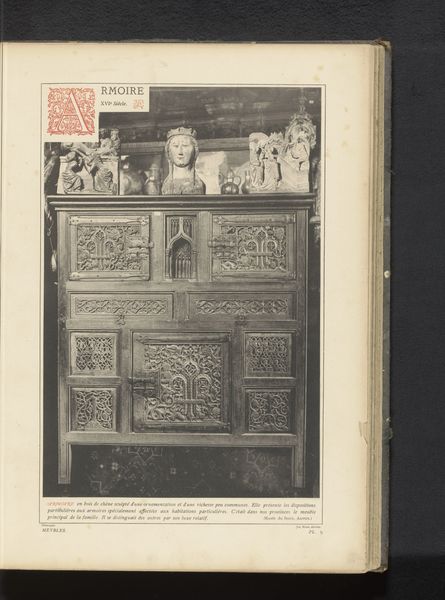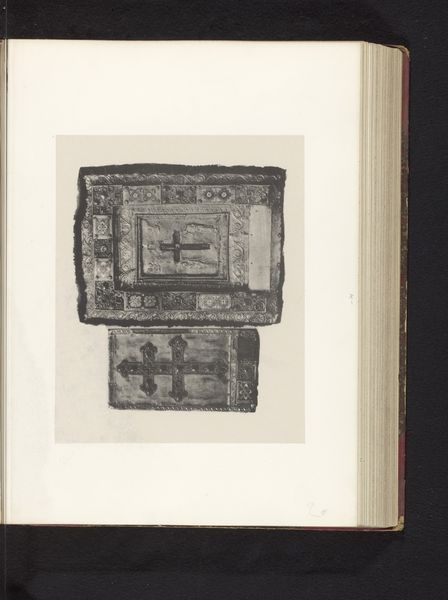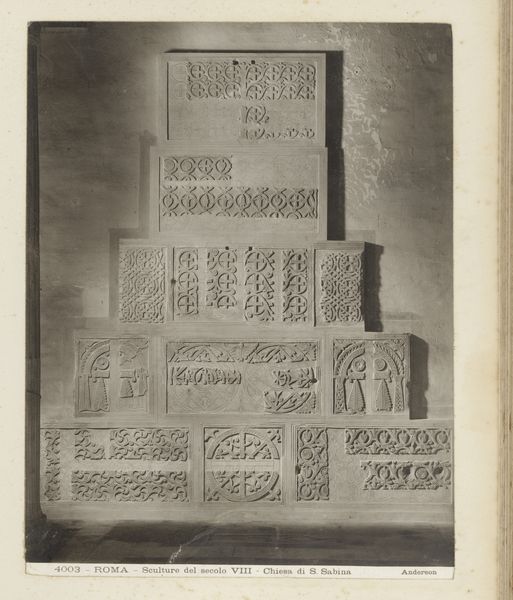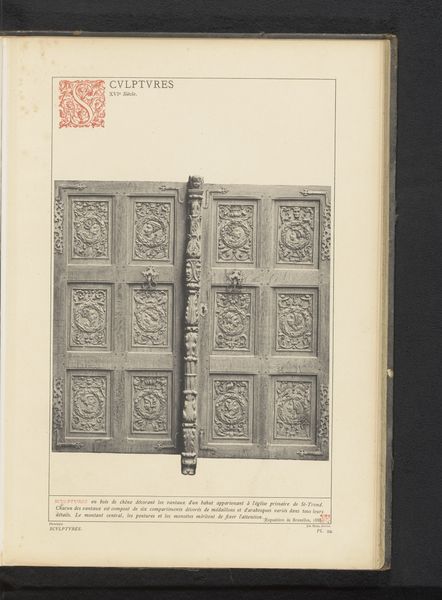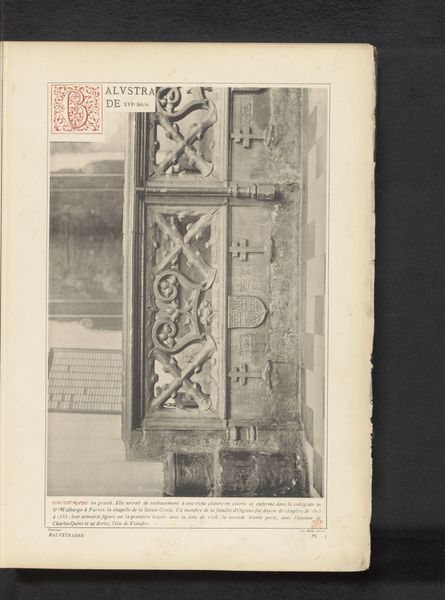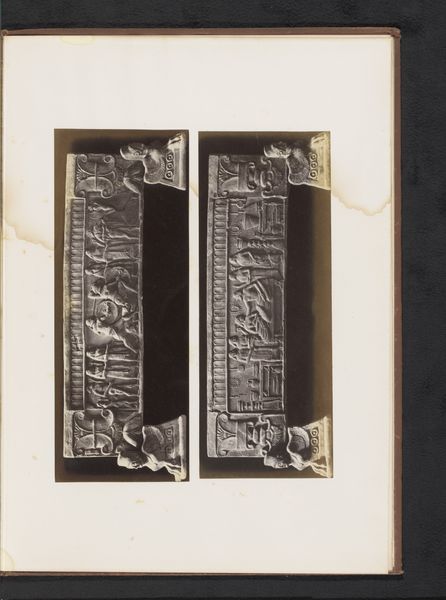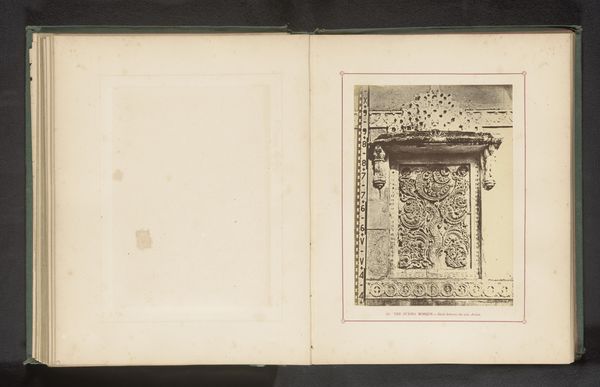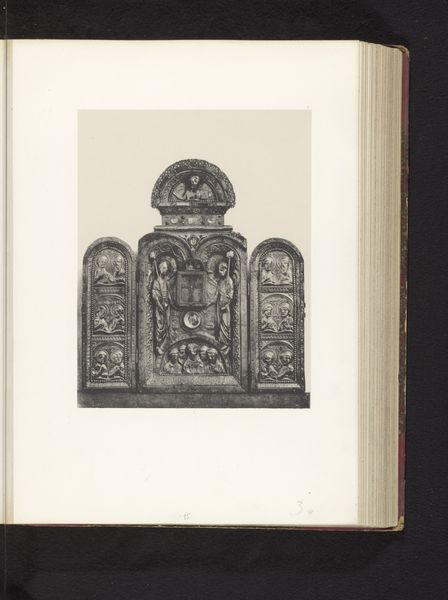
Twee reliëfs van ivoor met voorstellingen uit het Nieuwe Testament, uit de Onze-Lieve-Vrouwebasiliek in Tongeren en de Sint-Pauluskathedraal in Luik, opgesteld op een tentoonstelling over religieuze objecten uit de middeleeuwen en renaissance in 1864 in Mechelen before 1866
0:00
0:00
#
aged paper
#
toned paper
#
homemade paper
#
sketch book
#
paper texture
#
personal sketchbook
#
folded paper
#
sketchbook drawing
#
paper medium
#
sketchbook art
Dimensions: height 199 mm, width 274 mm
Copyright: Rijks Museum: Open Domain
Editor: So this is a photograph of two ivory reliefs with scenes from the New Testament. The photo, attributed to Joseph Maes, shows them on display in 1864. It feels quite distanced from the original objects. What story do you think it tells about how art was viewed at the time? Curator: Well, first we must consider what is actually being presented in the photograph. It isn’t just a record, it's a staged presentation. These objects, detached from their original locations, the Basiliek in Tongeren and the Kathedraal in Luik, are being presented as curiosities in an exhibition. Notice the setting – Mechelen. It emphasizes the shift from religious devotion to a form of secular appreciation. Editor: Secular appreciation...So it's about turning religious objects into something more... academic, perhaps? Curator: Precisely. The very act of displaying them signifies a shift. In their original sacred settings, the reliefs would have served as aids to worship, reinforcing religious narratives and communal identity. Exhibiting them reframes them as art objects for contemplation, objects for an elite public. Who do you think got to see this exhibition? Editor: I suppose that this show in 1864 probably catered to a bourgeois audience, keen on art and culture, but also keen on solidifying its position through displays of connoisseurship and historical knowledge. Curator: Exactly! The act of displaying objects like this underscores the social function of art in the 19th century, highlighting issues of class, taste, and cultural power. This image becomes not just a document of art, but of art consumption. Editor: Fascinating! Seeing it that way adds a whole other dimension to this photograph and helps me understand the priorities and agendas embedded within these historical artifacts. Thanks!
Comments
No comments
Be the first to comment and join the conversation on the ultimate creative platform.

